Echoes of grandeur linger in Haturia’s fading palaces
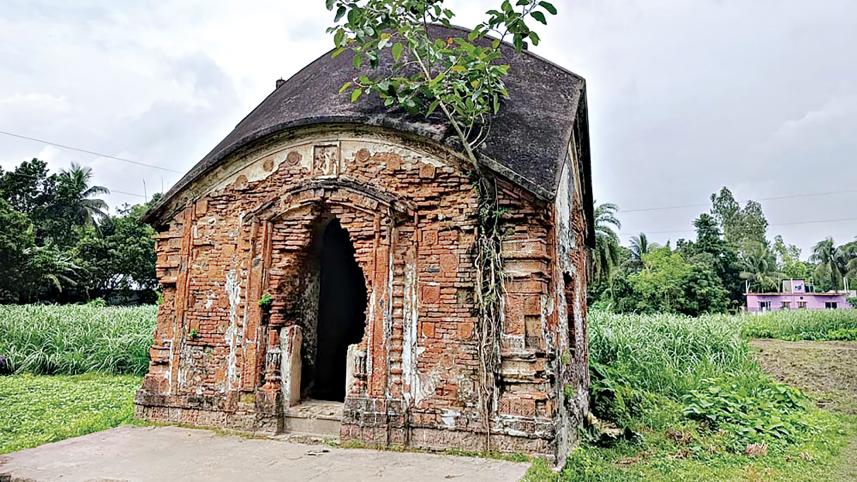
Tucked away on the banks of the Jamuna in Pabna's Bera upazila, the remote village of Haturia holds on to a remarkable past.
Once celebrated as the "village of 13 landlords", it was a flourishing hub of grandeur and commerce in the early 19th century, when stately homes, temples and ponds bore witness to influence and prosperity.
Much of that splendour has since faded. The grand palaces and ornate temples are now broken walls and empty shells. Yet even in their ruin, the remnants -- moss-covered gates, scattered wells, terracotta temples, and the still waters of ponds -- whisper stories of a glorious era.
They make Haturia not only a place of memory, but a forgotten heritage site waiting to be seen.
Haturia rose to prominence in the 1800s. Its location by the Jamuna made it a thriving business hub, attracting landlords and traders alike. Smooth river communication made the area ideal for commerce, and within decades it transformed from a quiet riverside settlement into an estate-rich village.
According to historians and locals, the settlement began with only two landlords. Before long, more powerful families arrived, building residences and estates along a two-kilometre stretch of the village.
In time, 13 landlords had established their presence here: Promothnath Bagchi, Kanchinath Bagchi, Upendronath Bagchi, Vobanicharan Bagchi, Kalishundor Roy, Khirodchandro Roy, Surenchondro Roy, Sudhangsho Mohon Roy, Shaktinath Roy, Bonkim Roy, Khudiram Pal, Jadunath Voumik, and Jitendronath Voumik.
They maintained their estates until the abolition of the landlord system in 1950.
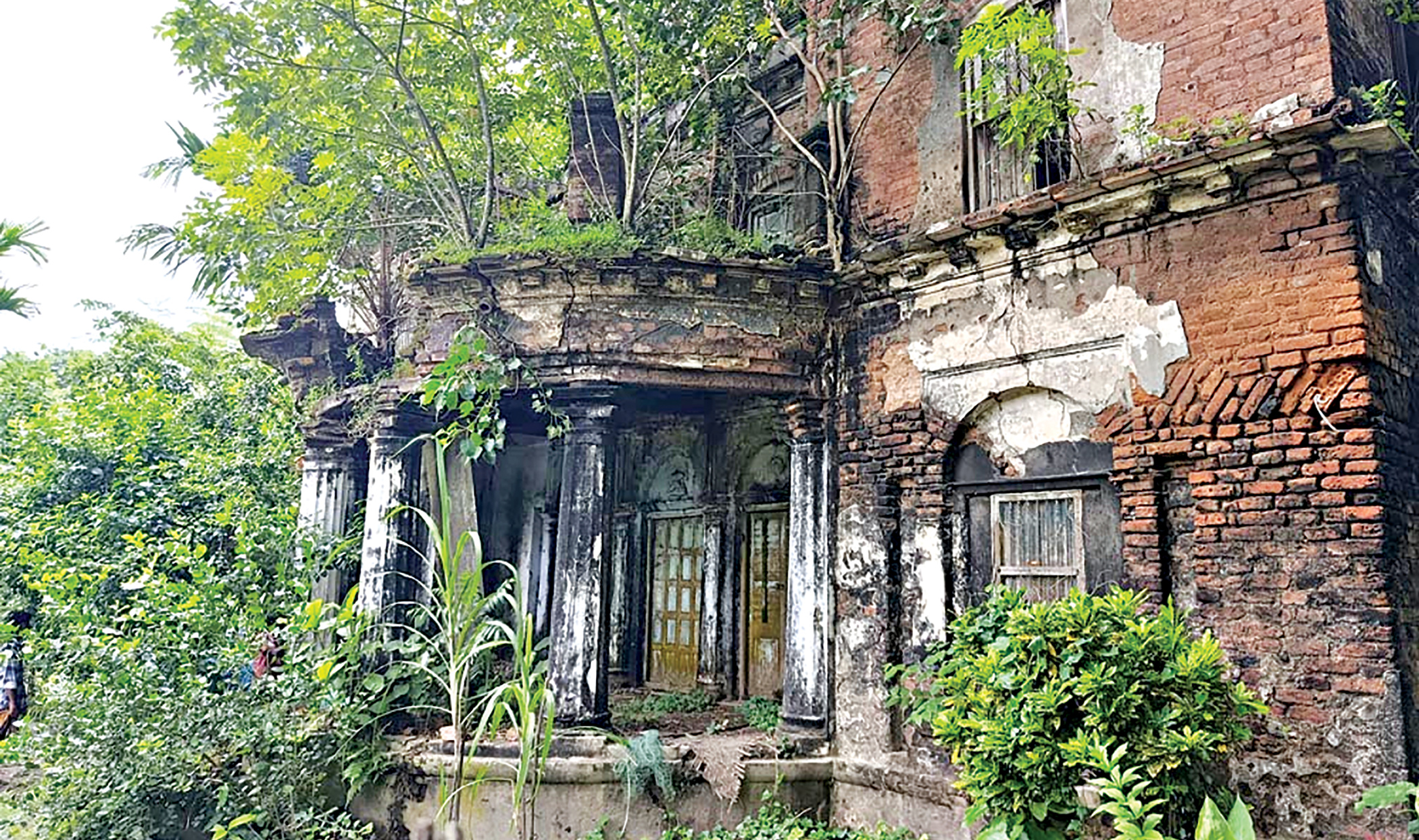
But Haturia's fortunes did not last. Some families left during the partition, and the rest departed during the Liberation War. Their vast estates, palaces and establishments were abandoned, left to decay or be overtaken by others.
"Haturia was once rich with the memories of ancient landlords. But their families left, leaving their estates behind," said Md Abdul Hamid, chairman of Haturia Nakalia Union Parishad.
He said that much of the land was later leased out, and eventually occupied by locals who produced their own land documents. In time, the palaces and ponds became possessions of villagers.
Residents recall that dozens of grand buildings stood until the 1980s. But over time, most were demolished to make way for new homes. Only fragments remain today, silent witnesses to what once was.
One of those is the palace of Khirchandro Roy's family, built in 1911. Though crumbling, the two-storied structure still shows signs of its architectural beauty -- thick walls, strong pillars, long corridors and wide windows.
Once adorned with terracotta, only a few remnants of statues survive. A dilapidated gate, overrun with creepers, stands as a lonely reminder of its past grandeur.
A family that once served the landlords still lives in its shadow. "My forefathers served them. When they left during the Liberation War, my father, Dilip Goshwami, took charge of the estate," said Polash Goshwami.
"In our childhood we saw many structures around the palace, but natural disasters and neglect destroyed them. Later, the palace became unsafe, with cracks in the walls and tilted pillars. We built a tin-shed behind it, where we still live," he added.
Elsewhere in the village, a temple from that era stands alone in the middle of a vast crop field. Known locally as "Shyama-Roy's home", it still bears centuries-old terracotta work.
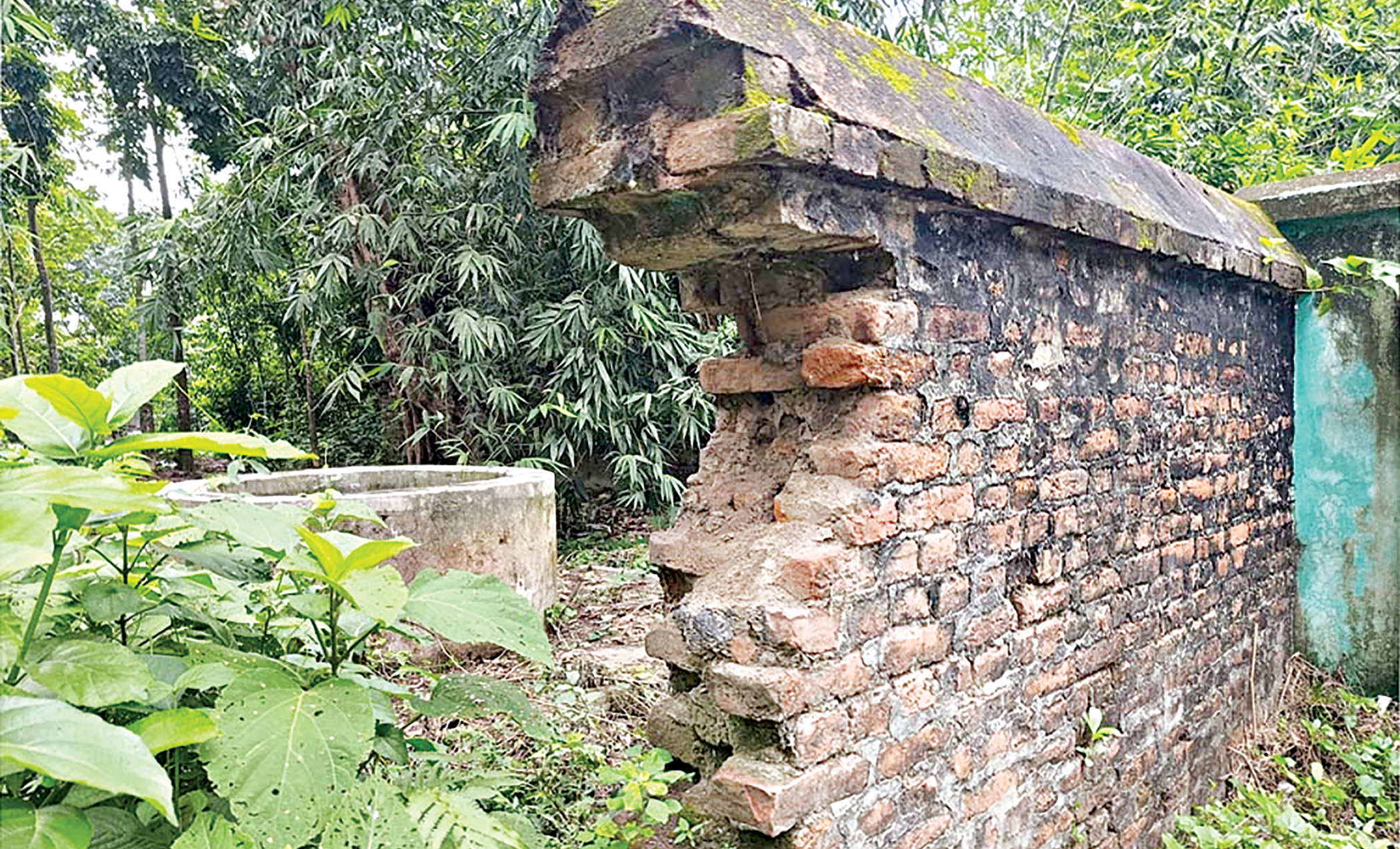
"We don't know the real history. It is said a golden statue of Radha-Krishna once stood here, moved to safety during the Liberation War," Polash said.
Once part of a wider complex, the temple now rises in solitude, its beauty surrounded by fields.
At the Haturia Health and Family Planning Centre, traces of another estate remain. A wide brick wall and an ancient well, now hidden behind modern structures, are said to be parts of a landlord's residence long destroyed.
Similar traces are scattered throughout the village -- wells, ponds, and broken walls, reminders of vanished palaces.
The most striking relic is "Bimola Pukur", a vast pond established in the Roy estate in honour of Bimola Sundori Roy, Kali Sundor Roy, Hara Sundor Roy and Durga Sundor Roy. Its well-decorated ghats and concrete walls bore European architectural touches, designed to welcome British rulers of the time.
Over the years, the estate around the pond was demolished and the water body itself fell into disrepair. But the administration later restored it, and today it serves as the main water source for villagers.
"In our childhood, we saw part of a destroyed palace beside Bimola Pukur. Back then, we were afraid to come here because of myths about spirits. Over time the palace disappeared, replaced by houses, but the pond still carries the memory of the past," recalled Md Sajahan Ali, an elderly resident.
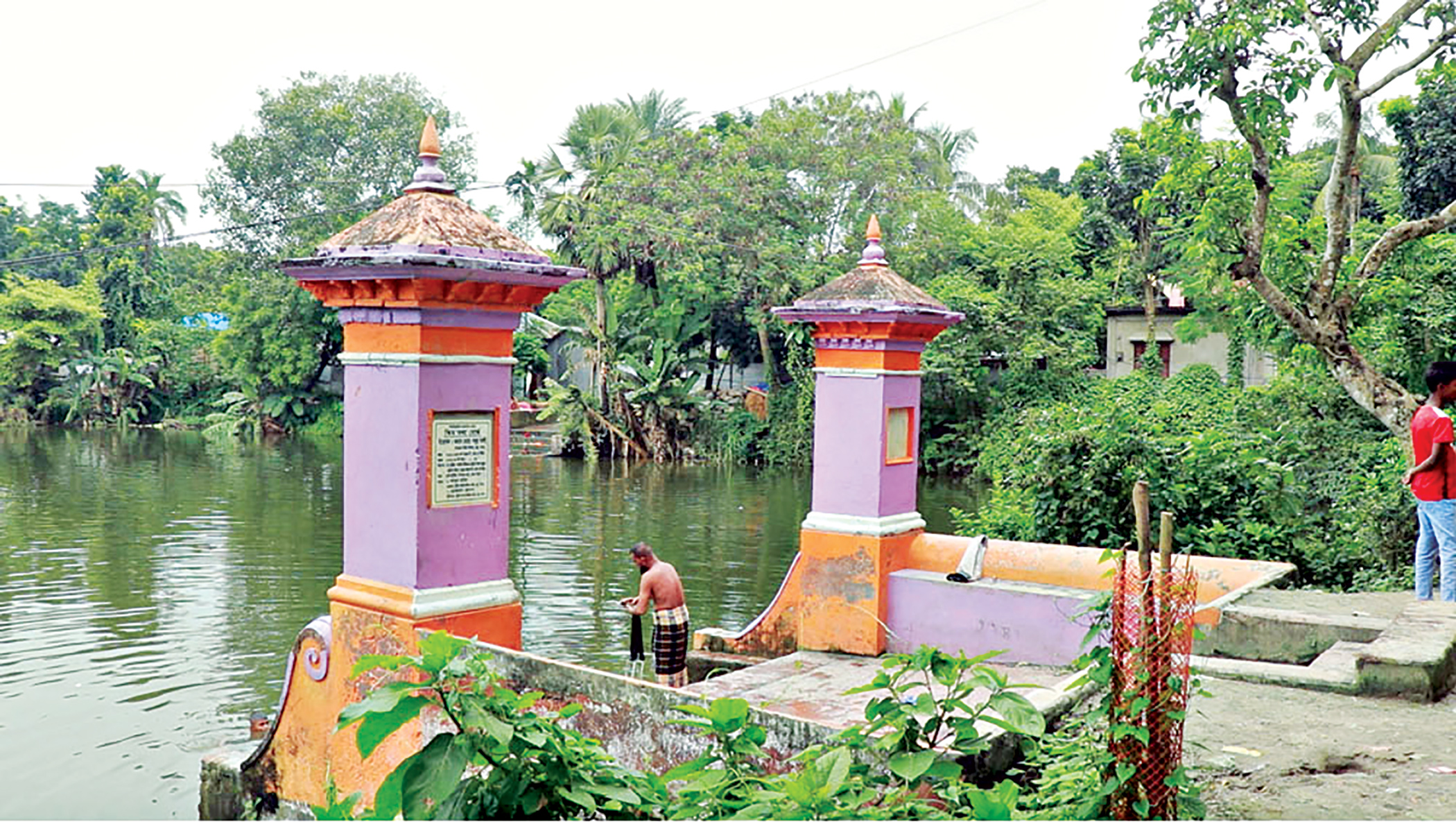
He said the pond was once connected to the Jamuna but the river has since moved away. "There were 13 palaces in this small village, each with their own ponds, wells, temples and offices. Most have been lost."
Other relics have also disappeared under the weight of time and modern life. Beside another ancient pond surrounded by brick walls now stand rows of new houses.
One resident, 80-year-old Md Ardash Fakir, said he had bought the estate from a landlord decades ago and demolished the palace to build homes for his family.
"My family bought the estate when I was young," he said. "I don't remember now from whom."
Like him, many locals claimed abandoned properties, producing land documents to secure ownership. Palaces were demolished, replaced by residential houses and shops. Officials from the archaeology department visited several times, but no preservation efforts followed.
For many villagers, it is a story of loss. "If the ancient heritage had been preserved, Haturia could have become a tourist spot," said Sajahan Ali. "But no one has taken initiative since independence. Over time, everything was destroyed."
Younger generations echo that regret. "We heard stories from our parents and grandparents about the landlords and their estates, but now we have nothing left except two or three ruins," said Md Russel Hossain. "If the government takes steps, the remaining structures can be preserved to teach future generations."
Contacted, Md Morshedul Islam, Bera upazila nirbahi officer, said most ancient structures were demolished because the site was never declared an archaeological one.
"We are trying to protect the existing memories," he added.
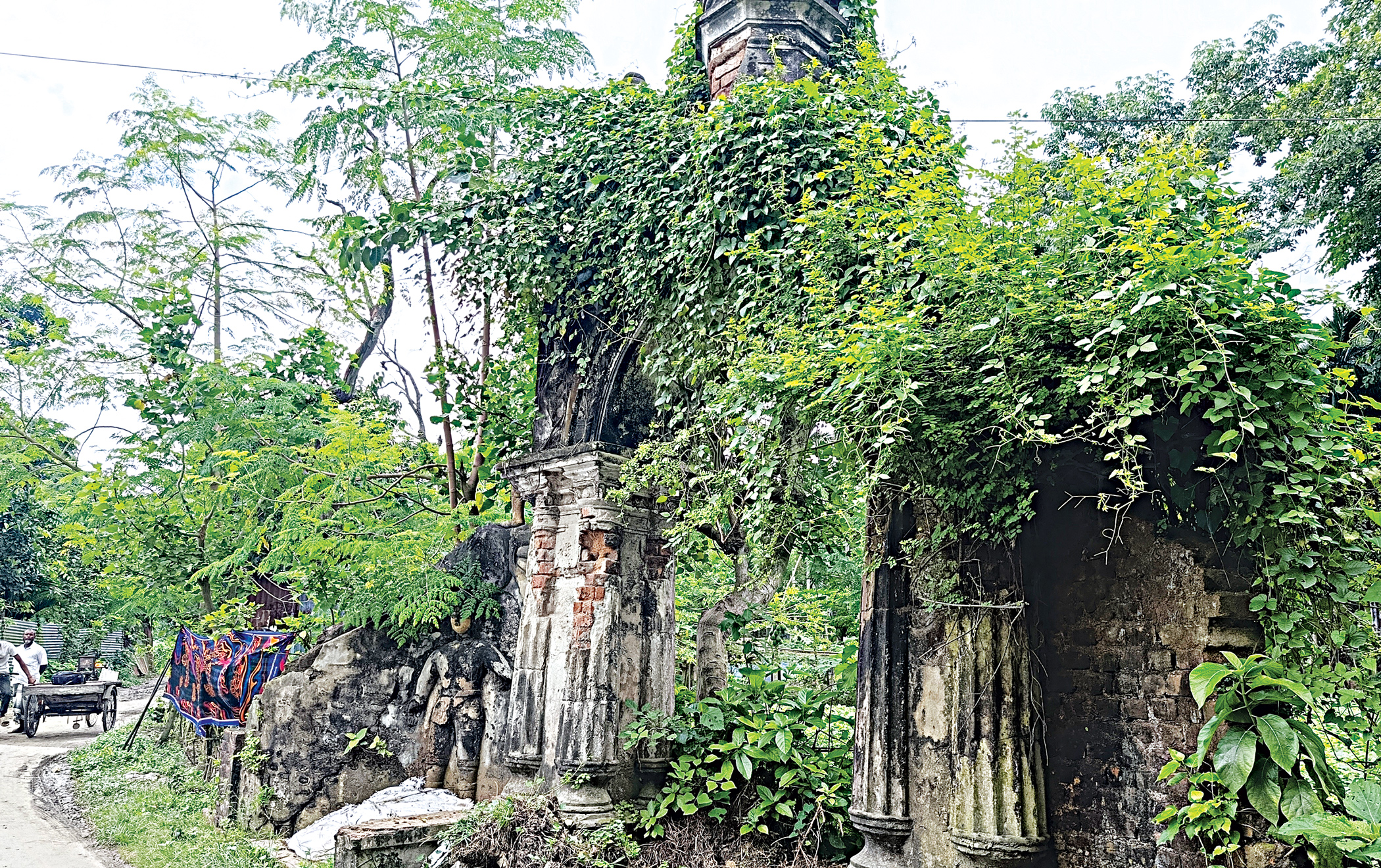
Today, Haturia is like any other riverside village. Crops grow in fields where temples once stood. Tin houses rise where palaces once dominated. Children play around ponds whose steps were once polished stone. Life moves on, but the air is heavy with echoes of what the place once was.
The Jamuna still flows by, though further away than before, its currents quieter than the voices of history it once carried.
And in Haturia, the mossy walls, broken gates and still ponds remain, holding fast to the memory of 13 landlords, their legacy reduced to ruins. The grandeur is gone, but the whispers endure, waiting for recognition, preservation, and perhaps, rediscovery.
There is no archaeological office in Pabna. The custodian of Shahzadpur Rabindra Kachari Bari in Sirajganj is responsible for looking after the archaeological sites in Pabna.
Contacted, its custodian Shawli Talukder said she was not aware of the site as she had only recently joined. Shawli said she would look into the matter soon.
"After the site is declared an archaeological site, steps can be taken to preserve it," she said, adding that without a proper archaeological survey, its value cannot be determined.

 For all latest news, follow The Daily Star's Google News channel.
For all latest news, follow The Daily Star's Google News channel.
Comments